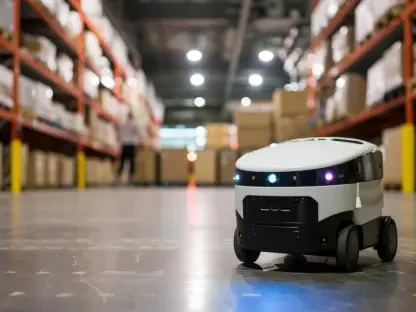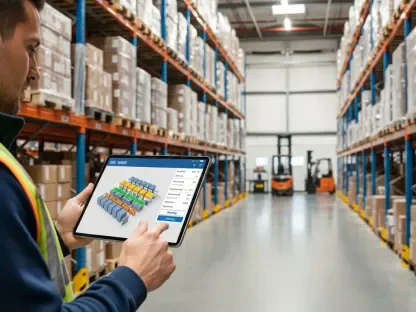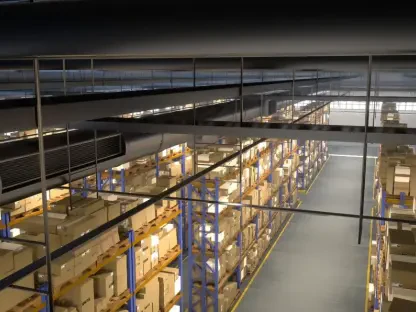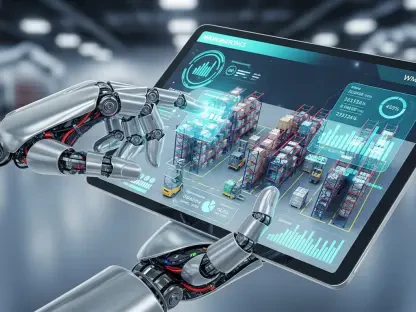Rail transportation is increasingly recognized for its potential to offer sustainable and efficient transit solutions. As global efforts to transition toward eco-friendliness intensify, the rail sector continues to attract substantial investments. This analysis provides an in-depth examination of the factors driving market growth, current trends, and industry projections, offering valuable insights for stakeholders.
Market Trends and Influences
Urbanization and Public Transport Expansion
Global urbanization trends have significantly impacted public transportation demand, with rail systems positioned as critical solutions. Governments are dedicating resources to develop and expand metro and commuter networks, addressing urban congestion and reducing environmental impact. For instance, the comprehensive expansion of the New York City Subway and the ongoing development of the Delhi Metro highlight the trend. However, obstacles such as funding limitations, land acquisition challenges, and technology integration persist.
Advancements in High-Speed Rail
High-speed rail technology is transforming the transportation landscape, particularly in countries like China and Japan. These nations set industry standards for speed and efficiency. High-speed rail not only cuts travel time between major urban centers but also provides a viable alternative to air travel for medium-distance commutes. Europe and North America are witnessing similar developments, driven by goals to improve connectivity and sustainability. Despite the promise, these projects necessitate significant financial investment and thorough long-term planning.
Technological Innovations in Railways
The railway sector is undergoing a technological renaissance. Innovations such as automated signaling, real-time tracking systems, and AI-powered maintenance operations are becoming integral to modern rail services. Germany’s Deutsche Bahn exemplifies the integration of digital technologies to enhance service reliability. Nonetheless, the adoption of new technologies entails substantial investment and workforce training, presenting a key challenge for the sector.
Electrification and Reduced Carbon Footprint
A notable trend in the rail industry is the move towards fully electrified networks, which significantly lower carbon emissions. This shift is part of a broader push towards sustainable practices across the transportation sector. Incorporating IoT technology and big data analytics into rail operations is expected to innovate maintenance and customer service, driving further efficiency improvements.
Market Segmentation
Type
Passenger Rail: This segment, encompassing high-speed trains, commuter services, and metro systems, is growing rapidly due to urbanization and supportive policy measures.
Freight Rail: Freight rail remains vital for global trade, offering an efficient alternative for bulk and large-scale goods transportation.
Application
Logistics: Rail transport continues to be an asset in the logistics sector, providing a sustainable option for bulk goods movement.
Public Transit: Investments are rising in metro and suburban rail networks globally, aiming to enhance urban public transportation.
Mining and Energy: These sectors benefit from rail transport’s efficiency and cost-effectiveness.
Technology
High-Speed Rail: Ongoing advancements in high-speed rail technology drive investments in faster and more efficient networks.
Automation and AI: The adoption of automated control systems and AI for predictive maintenance is revolutionizing railway operations.
Country-Specific Developments
United States: The growth in freight rail networks and high-speed rail projects is notable, bolstered by sustainable infrastructure initiatives.
Germany: As a leader in railway electrification and digital solutions, Germany continues to invest in high-speed rail and cross-border connectivity.
China: Dominating the global market, China boasts extensive high-speed networks and sustained growth in passenger and freight rail segments.
India: Transformative investments in electrification, metro expansion, and semi-high-speed corridors are accelerating market growth.
United Kingdom: Significant investments in high-speed projects like HS2 and sustainable public transport are driving market expansion.
Competitive Landscape
The rail transportation market is characterized by intense competition with major players emphasizing digitalization and sustainability. Key companies shaping the landscape include:
Siemens Mobility: Known for leadership in rail automation and digital rail solutions.
Alstom SA: Specializes in high-speed rail technology and urban mobility solutions.
CRRC Corporation Limited: A leader in rolling stock manufacturing, essential to China’s rail expansion.
Bombardier Transportation (Alstom): Noted for advanced rail technology in metro and light rail systems.
Hitachi Rail Limited: Focuses on high-speed rail, signaling, and digital solutions.
Implications and Strategic Insights
The dynamic growth of the rail transportation market reflects a global shift towards sustainable mobility and infrastructure development. As the market continues to transform, several actionable strategies for stakeholders emerge:
Governments and Policymakers: Continued investment in rail infrastructure and incentivizing technological adoption are crucial.
Industry Players: Companies should prioritize innovation, digitalization, and sustainable practices to maintain competitiveness.
Professionals and Consumers: Advocacy for and adoption of rail-based travel options will contribute to broader sustainability goals.
The rail transportation market’s trajectory indicates a future where sustainable and efficient rail networks play a central role in global transportation. Continued innovation and strategic investments are essential to realizing the potential of this pivotal industry.









